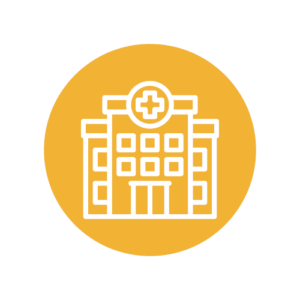The Top 10 Reasons People Go to the ER
Emergency room administrators are well aware of the critical and often chaotic nature of the emergency department. Understanding why patients come to the ER can help in strategizing ways to optimize patient flow, enhance care, and ultimately save lives. According to recent data from the Centers for Disease Control and Prevention (CDC), here are the top 10 reasons people visit the emergency room:
- Abdominal Pain: From appendicitis to gastrointestinal issues, abdominal pain can signify a range of conditions, making it a common and urgent reason for seeking emergency care.
- Chest Pain: Often feared as a symptom of a heart attack, chest pain is a leading cause of ER visits. Rapid assessment and intervention are crucial to managing potential cardiac events.
- Breathing Problems: Asthma attacks, chronic obstructive pulmonary disease (COPD) exacerbations, and other respiratory issues necessitate immediate medical attention.
- Cough that cannot be controlled with over-the-counter medication or other treatments and is affecting the body (body aches, breathing ability, or fatigue) often leads people to go to the ER.
- High Fever: Especially concerning in children and the elderly, high fevers can signal serious infections or other health issues.
- While many headaches are benign, sudden or severe headaches can indicate serious conditions like migraines, aneurysms, or meningitis.
- Pain in a site not referable to other specific symptoms is worrisome enough to frequently send patients to the ER for treatment.
- Back Pain: Severe or sudden back pain, often due to herniated discs or other musculoskeletal issues, can be debilitating and prompt a visit to the ER.
- Vomiting that doesn’t stop can cause (or has caused) dehydration, which leads to a host of other symptoms that warrant a trip to the ER.
- Psychiatric Issues: Mental health crises, including severe anxiety, depression, or suicidal thoughts, often necessitate emergency intervention.
Other common reasons that have ranked in the top ten in previous years include Injuries: Accidents, falls, and other traumatic events frequently result in ER visits for fractures, lacerations, and head injuries. Infections: Severe infections, such as sepsis or complicated urinary tract infections, drive many patients to the ER for prompt treatment. Stroke Symptoms: Timely intervention is critical in stroke cases, and symptoms like sudden weakness, slurred speech, and facial drooping require immediate evaluation.

Fast Facts About ER Use:
According to a national survey, here are some fast facts about the ER:
- Number of visits in a year: 139.8 million
- Number of injury-related visits (includes poisoning and adverse effects): 40.0 million
- Number of visits per 100 persons: 42.7
- Number of emergency department visits resulting in hospital admission: 18.3 million
- Number of emergency department visits resulting in admission to critical care unit: 2.8 million
- Percent of visits with patient seen in fewer than 15 minutes: 41.8%
- Percent of visits resulting in hospital admission: 13.1%
By incorporating all-in-one procedure chairs, hospitals and emergency clinics can significantly increase workflow from admission to treatment to discharge, ensuring that more patients receive timely and efficient care.

Streamlining Surgical Flows with All-In-One Procedure Chairs
With the multitude of reasons that drive patients to the emergency room, efficiently managing patient flow is essential. This is where the integration of all-in-one procedure chairs can revolutionize ER and surgical suite operations.
These innovative procedure chairs offer a versatile solution to enhance patient care and operational efficiency. Here’s how they can make a significant difference:
Sign up to get the latest industry news and offers right in your inbox
Versatility in Patient Handling: These chairs can be easily adjusted for various procedures, eliminating the need for multiple transfers and reducing the time spent on repositioning patients. From initial assessment to surgical intervention, the chair adapts to the patient’s needs, whether for examination, imaging, or surgery.
Improved Workflow Efficiency: By minimizing the number of times a patient needs to be moved, all-in-one chairs streamline the workflow, allowing medical staff to focus more on critical tasks rather than logistical challenges. This leads to faster diagnosis and treatment times.
Enhanced Patient Comfort and Safety: Frequent transfers can be distressing and risky for patients, especially those in critical condition. All-in-one chairs provide a stable and comfortable environment, reducing the risk of falls or other transfer-related injuries.
Reduced Time to Surgery: When a patient requires surgical intervention, the time from ER admission to the operating room is critical. All-in-one chairs can be quickly and efficiently moved to the surgical suite, minimizing delays and optimizing surgical readiness.
Optimized Use of Space: These chairs are designed to be compact and multifunctional, allowing for better utilization of space within the ER and surgical suites. This is particularly beneficial in high-volume hospitals where space is at a premium.
Simplified Post-Operative Care: Post-surgery, the same chair can be used for recovery, providing continuity of care and reducing the need for additional equipment. This seamless transition supports better patient monitoring and recovery.
Enhanced Staff Efficiency: Medical personnel can work more effectively when they are not burdened with moving and repositioning patients multiple times. This efficiency translates to more time dedicated to patient care and less physical strain on staff.
Cost-Effective Operations: Investing in all-in-one surgical procedure chairs can reduce the need for multiple pieces of equipment, lowering maintenance costs and the need for extensive inventories. This is a smart investment that pays off in operational savings.
Improved Patient Throughput: With faster admissions, treatments, and discharges, hospitals can handle a higher volume of patients without compromising on the quality of care. This is particularly crucial during peak times or mass casualty events.
Enhanced Life-Saving Potential: Ultimately, the efficiency and effectiveness of these chairs can lead to quicker interventions and treatments. In emergency situations, every second counts, and the time saved can be the difference between life and death.
Read More: “Making Every Second Count” Streamlining Surgical Flows”

Champion Chairs Help Save Time and Lives
For emergency room and surgical clinic administrators, the challenge is to balance high patient volumes with the need for prompt, effective care. Understanding the primary reasons for ER visits helps in designing better patient flow systems. Integrating all-in-one procedure chairs can transform how emergency departments and surgical suites operate, leading to improved patient outcomes and operational efficiencies.
By reducing transfer times, enhancing patient comfort, and streamlining workflows, these chairs are an investment in better healthcare delivery. They not only enhance staff efficiency, but they also ensure that more time is dedicated to what truly matters — saving lives. Investing in this medical seating product is a forward-thinking solution that aligns with the ultimate goal of every healthcare provider: to offer the best possible care to every patient, every time.
Watch this short video to see our TMM5 PLUS procedure chair in action and discover how it can streamline your facility’s surgical flows while still providing safety and comfort for patients and convenience for physicians.
To view our entire portfolio of products, browse our digital catalog. Then, request a quote for your facility.

